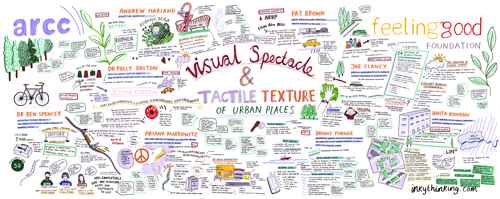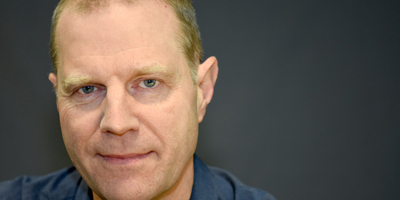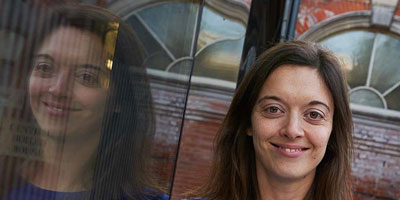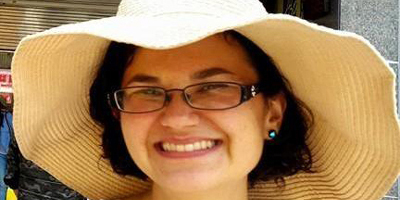Visual spectacle & tactile texture of urban places
February 2016, London
The third event in the Feeling good in public spaces series explores the impact of urban design – its form and morphology, materials used – on the visual and tactile senses. It examines how climate change or climate disruption could present challenges for these sensory experiences, and how developments in technology and knowledge could help improve urban resilience.
- Beauty or biophilia?
- Out of sight and out of touch? How attention shapes our visual and tactile experience
- Delightful cycling for all? The potential of enhanced sensory experience to encourage cycling
- The look and feel of memory: re-enacting borders through light and texture in Beirut
- Green Infrastructure potentials – design pedagogy in the field
- Biophilic environments in a changing climate: challenges & opportunities
- Climate-proofing social housing landscapes – enhancing community resilience
- Engineering advances with the potential to enhance the visual and tactile sensory experience of public spaces in a changing climate
- What is the importance of colour, texture and play in urban design?
Chair
Selina Mason, Board Director, LDA Design
Rapid talks:
Beauty or biophilia?
Andrew Harland, Senior Board Director, LDA Design
It is an often quoted assumption by the built environment professions that connection with nature is important to health and wellbeing, but how should designers use this rather easy conclusion to inform the creation of beauty and visual spectacle and why should it be so? This talk explores the principles of biophilic design applied to the urban environment and how we can use this analysis to understand and enhance our approach to the visual and sensory design of public space with reference to some specific projects, including the 2012 Olympic Park.
Out of sight and out of touch? How attention shapes our visual and tactile experience
Dr Polly Dalton, Royal Holloway
In a busy and complicated world it is essential that we can attend to stimuli that are currently relevant at the expense of those that are currently less relevant. However, this ability to attend selectively to certain aspects of the environment also leaves us unaware of much of the world around us. This talk will explain some of these effects, demonstrating that attention is an important determinant of our everyday experiences.
Delightful cycling for all? The potential of enhanced sensory experience to encourage cycling
Dr Ben Spencer, Oxford Brookes University
Ben will explore how urban design affects the kinaesthetic, tactile and visual experience of older riders when navigating the city of Oxford. US scholars Forsyth and Krizek suggest that urban design needs to take the sensory experience of cycling more seriously in order to forge cycling-orientated urban design practice that makes cycling ‘delightful’. The talk will provide a summary of the implications for designing cities for cycling that are not only safer and more inclusive, but that provide a ‘delightful’ sensory experience. This work is part of a UK Research Council funded project called ‘cycle BOOM’ which seeks to understand cycling among the older population and how this affects independence, health and well-being and to provide recommendations for design of the built environment.
The look and feel of memory: re-enacting borders through light and texture in Beirut
Ariana Markowitz, UCL
How do cities and people recover and heal from conflict? Cities can play an active role in post-conflict healing – not just politically and economically, but spatially and socially as well. Absent a national reconciliation or peacebuilding process following Lebanon’s 15-year civil war (1975–1990), Beirut has sought refuge in the privatisation and sanitisation of its public spaces. The memories of this conflict, which reside in certain bounded physical spaces, including the Green Line in the neighborhood of Nasra, are diffusing as Beirut marches toward a new kind of future. I propose a design intervention in light and texture that would allow residents to re-embody their individual and collective memories and re-enact the borders of the places that contain them. By changing the way Nasra looks and feels, I hope to create opportunities for city residents to remember conflict and reflect on how they and their cities have grown and changed in the years since, providing them with a space to navigate and metabolise their individual and collective trauma.
Green Infrastructure potentials – design pedagogy in the field
Pat Brown, Landscape Interface Studio, Kingston University
Associate Professor Pat Brown presents research from the ‘Cities Alive: Rethinking Green Infrastructure’ workshop run collaboratively between Kingston University’s Landscape Interface Studio(LIS) and Arup’s Landscape Architecture team. The workshop was devised to demonstrate LIS’s pedagogic approach and to trial interdisciplinary graduate and practitioner learning in the context of the recent Cities Alive: Rethinking Green Infrastructure research report, undertaken by the Arup Foresight Group. Post-graduate students took part in the workshop which was supported by Kingston University’s Centre for Higher Education Research and Practice (CHERP) Students were asked to explore green infrastructure design solutions to help resolve contemporary urban issues. The Cities Alive initiative targets rethinking green infrastructure and addresses the role of – trees, water, public spaces – in delivering measurable benefits to the quality of life in cities. Live projects promote learning through direct action on the ground and encourage continuous consideration in response to findings and research. The Cities Alive Workshop asked students to assume responsibility for investigation, experimentation, and developing design proposals and outcomes thus engaging them intellectually, emotionally, and socially and enhancing an integrated learning experience.
Biophilic environments in a changing climate: challenges & opportunities
Joe Clancy, Landscape Architect
Biophilic environments have the capacity to improve our health and well-being, by reducing stress, blood pressure, improving mood and aiding recovery from mental fatigue. However, their effectiveness is dependent upon variable, dynamic factors in the built environment. Climate change poses a challenge, as not only will it impact upon and exacerbate existing human health issues, but the environments that we use to maintain and enhance our health and well-being. This talk will look at the challenges our built environment faces and what we can do to make our biophilic environments more resilient in the face of climate change.
Climate-proofing social housing landscapes – enhancing community resilience
Anita Konrad, Groundwork London
Frequently situated in areas of high multiple deprivation and suffering from a chronic lack of investment, social housing landscapes tend to be among the most vulnerable urban environments. At the same time, these landscapes offer enormous potential for achieving substantial adaptation impact combined with tangible social benefits for their resident communities. Drawing on a current Groundwork programme in the London Borough of Hammersmith & Fulham, the talk will present an award-winning social housing retrofit model delivering affordable and aesthetically attractive nature-based adaptation solutions, housing sector training, community resilience and employment outcomes combined with customised methodologies for monitoring both the technical impacts and the social return on investment.










